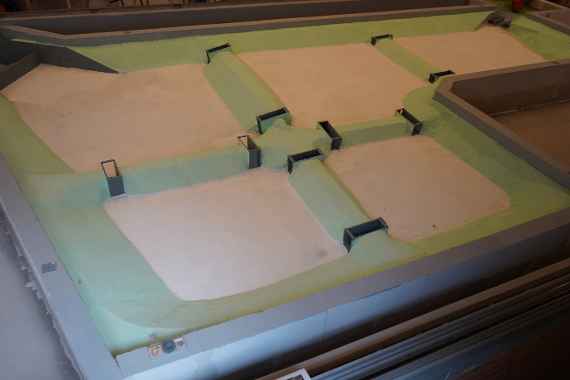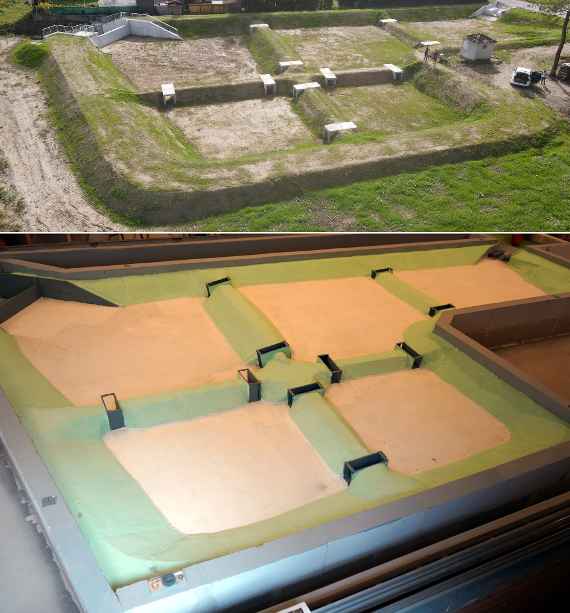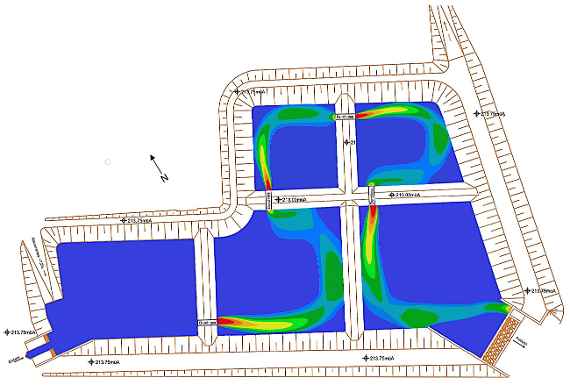The project LandSed is conducted together with the Institute for Water and Soil as well as the Civil Engineer Dr. Summer and deals with the reduction of suspended sediments and their aggradation in Lower Austrian Rivers. The project mainly focusses on the optimisation of aggradation processes to effectively remove the suspended load from the rivers. In addition, potential aggradation areas need to be easily accessible. Thus, existing flood retention basins are envisaged to be used and optimised as aggradation areas for suspended sediments.
A research reservoir for flood protection as well as sediment retention was constructed for investigating and, subsequently, better understanding aggradation processes. In September 2020, the reservoir was finished. The research activities comprise both, the composition and structure of suspended matter and the aggradation processes depending on the flow path through the basin. Additionally, a physical model test scaled 1 to 10 was constructed to analyse the aggradation processes for different flood hydrographs as well as different amounts of suspended sediment load. The main goal is to optimise the sediment retention as a function of the hydraulic flow characteristics such as main flow path or retention time. For unsteady flow conditions, it is expected to improve the sediment retention by varying the flow path.
Aerial view of the research basin in Breitenwaida (upper picture) and the physical model of the research basin scaled 1 to 10 (lower picture). Opening and closing the dam passages is used as a measure flow control.
These investigations on the physical model are supported by three-dimensional numerical simulations using the software RSim-3D (Tritthart, 2020). The results from previous numerical simulations already led to an initially optimized control of the flow path based on the variation of the openings in the basin passages.
Numerical flow simulation under steady flow conditions in the research basin. The flow is directed through the basin by closing or opening different dam passages.
Project team members: A. Diermaier, C. Havel, M. Hengl, S. Kainz, U. Stephan, P. Stockhammer, K. Wölzl
Public client: Office of the Federal Government of Lower Austria



